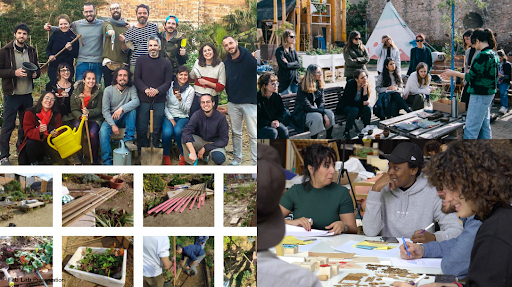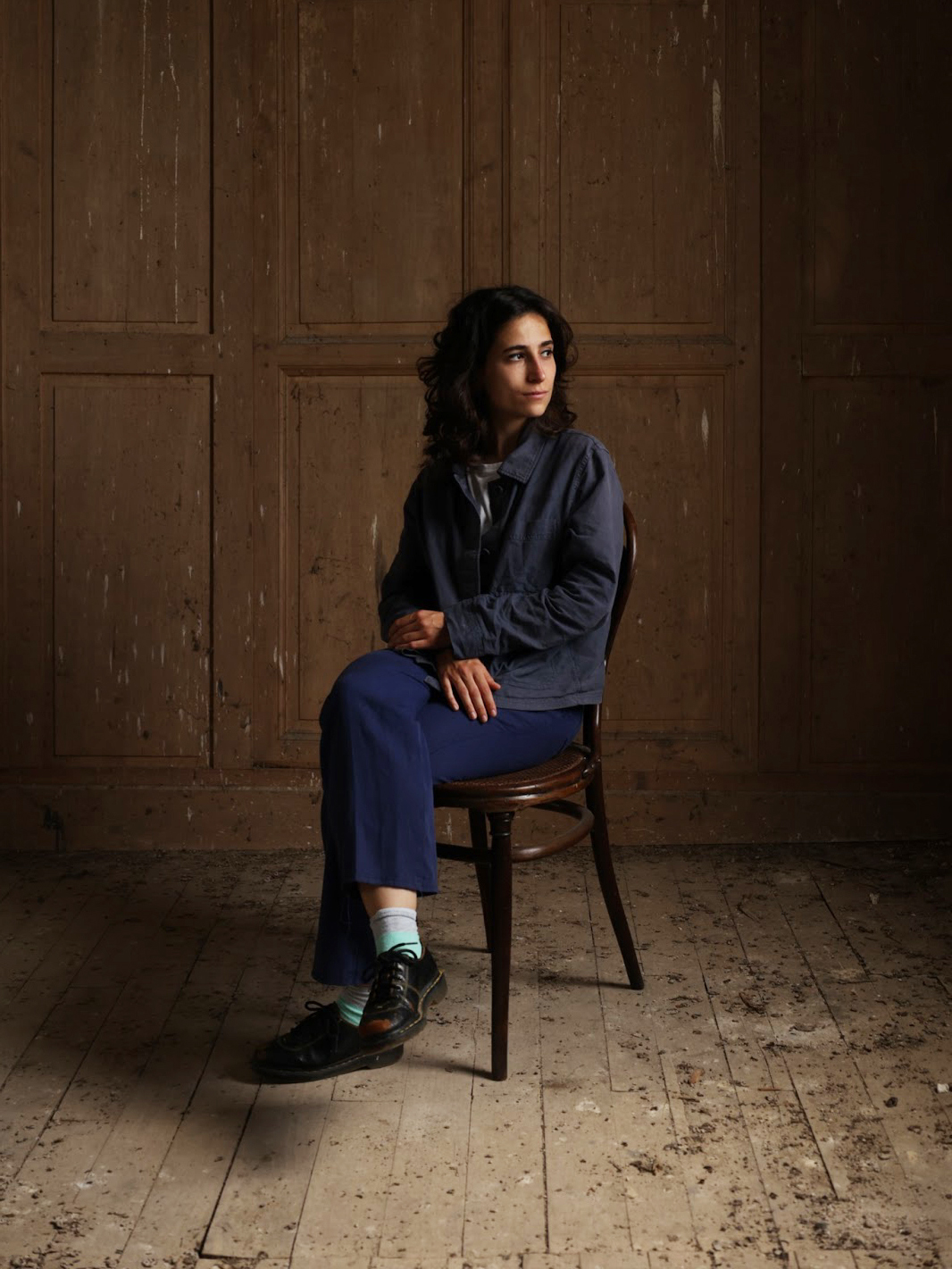Syllabus⇝
MDEF Research, Design and Development studios aim to take research areas of interest and initial project ideas into an advanced concretion point, and execution plan. The studio structure in three terms could be understood as follows:
TERM 1 Research: Understanding what it means to design for emergent futures. Analyzing the past and finding weak signals. References, state of the art. Identifying areas of interest. Experimenting from the first-person perspective.
TERM 2 Design: Forming the present through interventions in the real world. Building the foundations of your design space, forming strategic partnerships. Applying knowledge into practice through iterative prototyping. Testing ideas and prototypes in the real world.
TERM 3 Development: Refining interventions and identifying desirable futures. Establishing roadmaps for the construction of emergent narratives. Communicating and disseminating your project through speculative design.
The Second Term Design Studio aims to refine the work developed by students during the first term of the Master program. After identifying areas of interest from weak signals in the first term, and creating their design space and first interventions, students will be encouraged to take a further step into their projects, focusing on finding and growing their communities of practice and developing interventions in the real world (digital or physical).
Learning Objectives⇝
The specific goals are the following: - Further explore areas of interests identified in Term I - Involve others to become part of their design processes - Bring forth design interventions with their communities of practice to explore an area of interest. - Reflect on the becoming, outputs and outcomes of design activities
Keywords: Design Interventions, Community of Practice, Prototyping, 1st Person Research through Design, Design Space, Documentation and Communication
Schedule⇝
We suggest engaging in an average of four collective design interventions this term, but naturally it can change depending on the project, the evolution or the student’s personal circumstances. The number four is a guideline.
Collective design intervention: a collective design action with humans and/or non-humans - Jana & Roger
Goals: Critically look back at your project, reflect on the feedback from the Design Dialogues, and propose a new scope, goals and next steps.
Activity: Briefly present in class 3 of the main learning points from the 1st trimester.
Assignment: Reflect on your and your project’s current stage of development allowing your project to talk back. Analyze your so-called “failures” as opportunities for redefining your frames of reference and repositioning yourself and your project accordingly.
Deliverable: An updated version of your design space. A 500 word text with a summary of your journey so far, adding the repositioning of yourself and your project. Make explicit new project goals and next steps including a proposal for the 1st intervention of the second trimester (a draft will be discussed during the design reviews the week after).
20/01 Exploring alternative presents in context. Look for your peers and communities and make sense of a 1PP Design Action. Expand the boundaries of your interventions - Jana & Roger
Goals: Understand yourself better as a design tool in contexts, learn how to properly document, analyze and make sense of a design action from a 1PP. Explore your biographies and analyze your way of drifting in order to make sense of the alternative present you are creating.
Activity 1: Briefly present in class an updated version of the design space and a proposal for the 1st intervention of the second trimester.
Activity 2: Analyze the evolution of your design space to reflect on your way of drifting to envision your future biography by means of an alternative present.
Activity 3: Plan your first design intervention of the term and map the actors and infrastructure you want to involve.
Task: Carry out your 1st design intervention from a 1PP with your community of practice (involve yourself in the context you want to work on).
Deliverable 1: Document the design intervention, analyze it and reflect on the findings.
Deliverable 2: Map, visualize and analyze the evolution of your design space based on ways of drifting and reflect on the trajectories you might want to project. Create a narrative in relation to your alternative present.
03/02 Being thorough with your Research - Toni Llàcer
Goals:
- Emphasize the importance of rigor and depth in design research to inform interventions.
- Introduce methods for collecting, analyzing, and organizing data to strengthen research outcomes.
- Highlight strategies for linking insights to actions, ensuring research is actionable and grounded in real-world contexts.
- Foster critical reflection on the research process, encouraging students to question assumptions and biases.
Activity:
TBD
Task:
- Plan and execute a design intervention using the opportunity given with the micro challenge, to use research insights to inform the approach.
- Document and analyze the intervention, focusing on how research guided the decisions and outcomes.
Deliverable 1:
One step further than the video: Intervention Report
A detailed document that includes:
- Research methods used.
- Key findings and insights.
- Analysis of how findings influenced the design intervention.
- Reflection on what worked, what didn’t, and areas for improvement.
Deliverable 2:
Updated Design Space: Visual or conceptual updates based on new findings and relationships built during the intervention.
The Ethics of Making: Accountability in Design Practices - Toni Navarro y Alejandra Lopez Gabrieliris
Goals:
- Explore the ethical dimensions of design and its impact on emergent futures.
- Develop a critical perspective as a foundational skill for analyzing and questioning assumptions, frameworks, and contexts.
- Emphasize the importance of commitment and thoroughness in the design process, highlighting accountability and sustained effort.
- Equip students with tools to integrate ethics into their interventions, ensuring designs advocate for equity, sustainability, and resilience.
Activity: TBD
Task:
- Develop a short manifesto or set of principles outlining your ethical commitments as a designer.
- Reflect on your current project, identifying areas where ethical considerations can be strengthened or reframed.
Deliverable 1: Visual or conceptual map showing the relationship between your design values, ethical commitments, and project goals.
Deliverable 2: Carry out your design intervention. Analyse it, reflect on the findings.
Designing Transitions: Navigating Wicked Problems for Sustainable Future - Holon, Markel Cormenzana/Adrià Garcia
Goals:
- Introduce students to Transition Design, a transdisciplinary approach for addressing wicked problems and catalyzing transitions to more sustainable, equitable and desirable long-term futures.
- Understand the agency of your interventions and the theory of change you are bringing forth.
Activity 1: Present your previous design intervention.
Activity 2: TBD - Understand the Socio-Technical Transition(s) your actions are activating
Task: Plan and execute a 4th design intervention, a collective design intervention taking into account this perspective.
Deliverable 1: Carry out and document an end of the term design intervention using the micro challenge posed by the FabLab. Analyse it and reflect on the findings.
Deliverable 2: TBD - Define your theory of change.
Deliverable 3: Update your design space with the relations you have built.
Exploring alternative presents: Expanding the boundaries of your interventions.
Design Dialogues II Preparation
Goals: Create a collective and individual building up plan for the Design Dialogues exhibition.
Activity 1: Group dynamic to create themes and groups of projects for the exhibition.
Task: Planning of the exhibition, space allocation and special needs.
Deliverable 1: Work on the design dialogues deliverables.
Deliverables⇝
Deliverables for after the holidays (Submission deadline, April 6th)
- Video-documentary (2-5 min) (video-journaling) of your Term II design interventions - the video can be presented during Design Dialogues (optional)
- 5 good resolution images of your work during Term II (experiments, prototypes, interventions, Design Dialogues space..)
- 2 good resolution screenshots of your individual and/or collective Design Spaces
- Website PDFs (Seminar Reflections)
These are the points we are going to look at for Term II:
- Involvement of the community through the design interventions
- Situating the design interventions in context
- Framing opportunities considering resilience, material flows, situated knowledges and existing infrastructures in your design process
Grading Method⇝
| Percentage | Description |
|---|---|
| 50% | Faculty (including written assignment) |
| 50% | Self-Evaluation |
Self-Evaluation Question: Look back at the interventions you did last term and analyze them by self-evaluating your development:
- How much have you involved your community through your design interventions?
- Did your process involve others in the design and implementation of the interventions? How meaningful do you think the interventions were for the external people that were involved?
- In terms of situating your interventions, how successful were you in considering the resilience, material flows, situated knowledges and existing infrastructures in your design process?
- Were you able to draft an alternative present through the iterative reflective process offered by the outcomes of your design interventions?
European Credit Transfer and Accumulation System (ECTS)
12 ECTS
Faculty⇝
As a designer and researcher with a strong focus on sustainable practices and innovative design methodologies, Jana is committed to questioning and challenging the field of design. By continuously striving for movement and positive change, she puts sustainability, innovation, and care at the forefront of her work — which is always underpinned by post-humanist and feminist materialist thought. In her design practice, Jana’s work is community-driven and collaborative, working with other designers and artists to create thought-provoking installations and experiences.
Roger Guilemany is a founding member of the design cooperative aqui, where he contributes, through action research, to processes of ecosocial transition and the praxis of participatory design. As an independent researcher, he is interested in relationships and collaborative processes of situated production. With his design practice, he also collaborates with commoning projects and other self-governance structures.


